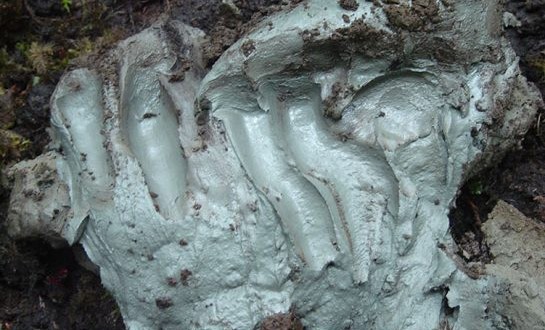Scientists at the University of B.C. have discovered that a rare clay used as medicine by aboriginals in northern B.C. contains antibacterial properties that could be used to treat antibiotic-resistant bacteria.
The researchers recommend the rare mineral clay be studied as a clinical treatment for serious infections caused by ESKAPE strains of bacteria.
The so-called ESKAPE pathogens—Enterococcus faecium, Staphylococcus aureus, Klebsiella pneumoniae, Acinetobacter baumannii, Pseudomonas aeruginosa, and Enterobacter species—cause the majority of U.S. hospital infections and effectively ‘escape’ the effects of antibacterial drugs.
“Infections caused by ESKAPE bacteria are essentially untreatable and contribute to increasing mortality in hospitals,” says UBC microbiologist Julian Davies, co-author of the paper published today in the American Society for Microbiology’s mBio journal.
“After 50 years of over-using and misusing antibiotics, ancient medicinals and other natural mineral-based agents may provide new weapons in the battle against multidrug-resistant pathogens.”
The clay deposit is situated on Heiltsuk First Nation’s traditional territory, 400 kilometres (250 miles) north of Vancouver, Canada, in a shallow five-acre granite basin. The 400-million kilogram (400,000 tonne) deposit was formed near the end of the last Ice Age, approximately 10,000 years ago.
Local First Nations people have used the clay for centuries for its therapeutic properties—anecdotal reports cite its effectiveness for ulcerative colitis, duodenal ulcer, arthritis, neuritis, phlebitis, skin irritation, and burns.
“We’re fortunate to be able to partner with UBC on this significant research program” says Lawrence Lund, president of Kisameet Glacial Clay, a triple bottom line business formed to market cosmetic and medicinal products derived from the clay. “We hope it will lead to the development of a novel and safe antimicrobial that can be added to the diminished arsenal for the fight against the ESKAPE pathogens and other infection-related health issues plaguing the planet.”
In the in vitro testing conducted by Davies and UBC researcher Shekooh Behroozian, clay suspended in water killed 16 strains of ESKAPE bacteria samples from sources including Vancouver General Hospital, St. Paul’s Hospital, and the University of British Columbia’s wastewater treatment pilot plant.
Agencies/Canadajournal/Press Releases
 Canada Journal – News of the World Articles and videos to bring you the biggest Canadian news stories from across the country every day
Canada Journal – News of the World Articles and videos to bring you the biggest Canadian news stories from across the country every day



